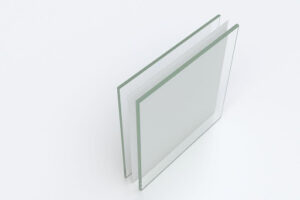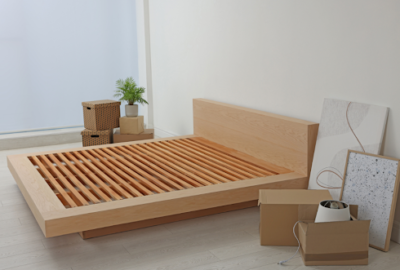The Difference between Laminated Glass and Tempered Glass: Which one is better?
These days, many homeowners and contractors prefer safety glass over standard one. The safety glass offers enhanced safety and protection. They are pretty durable too. Now, regarding safety glass options, you can choose between laminated and tempered glass.
Both these glass options are great. However, there are some differences in tempered and laminated glass that you should consider to choose the right option. This article is all you need to know about some common differences between laminated glass and tempered glass. So, let us get into it.
What Is Tempered Glass?

Tempered glass is a type of safety glass that has been treated with heat and cooled very quickly. This makes the glass stronger, so it is less likely to break if there are sudden temperature changes.
Tempered glass is stronger than regular glass, but it can still break. For example, it will shatter if it is hit hard enough or if the temperature changes too much.
Upon impact, it shatters into tiny harmless glass pieces. So, its durability and safety characteristics make it one of the best safety glass options out there. Find out more on laminated glass vs tempered glass here.
Some Common Applications of Toughened Glass

Tempered glass is used where regular glass can cause severe damage, like in car windshields, glass stairs, glass railing, and shower doors. It is also used in products that need to be durable, such as tabletops and cookware.
What Is Laminated Glass?

Laminated glass is made up of two or more pieces of glass that are bonded together with an adhesive. The adhesive can be either a polymer or resin.
Laminated glass is an extremely strong and durable type of glass. It is also very difficult to break, making it an ideal choice for applications where safety is a major concern. Laminated glass can also provide a high level of sound insulation, making it a good choice for use in noise-sensitive areas.
Some Common Applications of Laminated Glass
Laminated glass is a strong glass type and does not break easily. This makes it good to use in places where people might get hurt if the glass breaks. Laminated glass can also keep out noise, so it is good to use in places where people do not want to hear a lot of noise.
Further, it is typically used in windows and doors, and it is designed to provide extra security and protection against shattering. Laminated glass can also be used in automobiles and aircrafts.
The Differences between Laminated and Tempered Glass
Both laminated and tempered glass is strong and can provide protection. However, there are some differences between the two.
1: Manufacturing Process
Both these safety glass options are made by heating up materials and cooling it down quickly. But the way they are made is different. This results in some key differences between the two types of glass.
Laminated glass is made by heating up two or more layers of glass and bonding them together with a layer of plastic. The manufacturing process for laminated glass is complex and requires special equipment. As a result, laminated glass is typically more expensive than tempered glass.

Tempered glass, on the other hand, is made by heating up a single sheet of glass and then cooling it down very quickly. This process makes the glass harder and more resistant to breakage. Tempered glass is less expensive than laminated glass but is also not as strong.
2: Strength

Laminated glass has two or more layers of glass with a layer of plastic in the middle. This type of glass is harder to break than regular glass. If the laminated glass does break, it will usually only crack or chip – it will not shatter into dangerous shards as regular glass would. Laminated glass is a type of glass that is very good at blocking UV rays. This makes it a popular choice for windows and doors.

Tempered glass is also strong, but it is made in a different way than laminated glass. First, the glass is heated until it is soft. Then, it is cooled very quickly. This process makes the glass harder than regular glass. Tempered glass also has a higher resistance to shattering. But if the tempered glass does break, it will shatter into small, safe pieces.
4: Safety Characteristics
Both these glass options won’t disappoint you in terms of safety and protection. However, they both offer different levels of safety and protection. For instance, laminated glass is nearly unbreakable.
That is because its glass particles don’t fall out of the frame in case of an impact, whereas tempered glass can break. However, it breaks into tiny glass particles, which doesn’t cause any harm or injury.
5: Price and Availability

Laminated glass is expensive because of its extra strength and durability. Therefore, it is mostly used in high-rise buildings for maximum protection, heat resistance, and even sound insulation.
Tempered glass is a relatively inexpensive safety standard glass. It offers decent strength, durability, and protection. So, if you are short on budget and want to opt for safety glass, toughened glass is the right option.
Bottom Line!
So, these are some of the common differences between laminated glass and tempered glass. In this regard, laminated glass clearly takes the lead with its enhanced safety characteristics. It is made up of two or more pieces of glass that are bonded together with an adhesive. The adhesive can be either a polymer or resin.
Whereas toughened glass also offers adequate safety and durability. However, it can break and cannot withstand major impacts, as much as laminated glass. Anyhow, you can choose any of these glass options for your construction or DIY project. Always buy glass panels from a trustworthy glass distributor.







